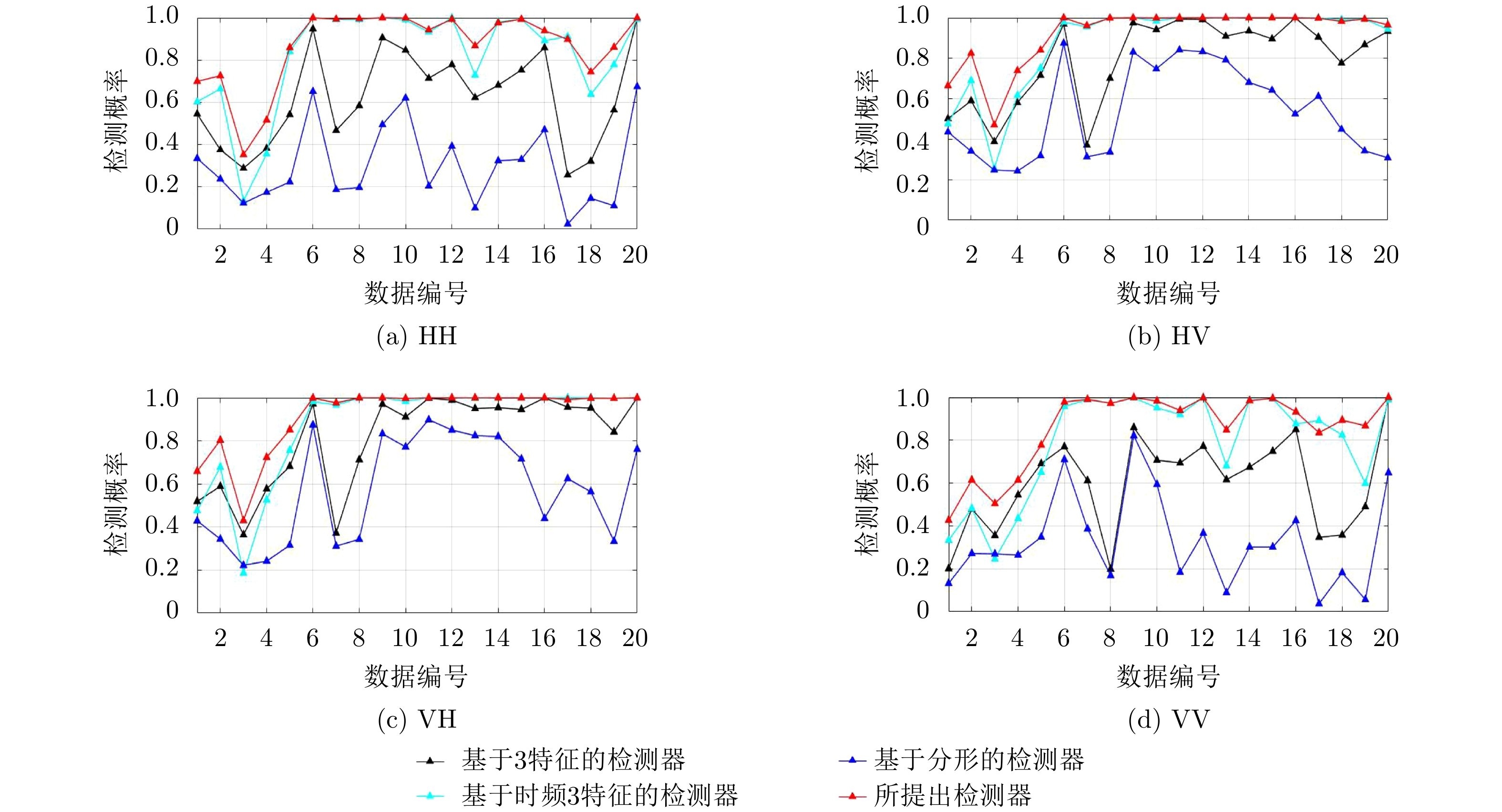| [1] |
WANG Shibin, CHEN Xufeng, WANG Yan, et al. Nonlinear squeezing time–frequency transform for weak signal detection[J]. Signal Processing, 2015, 113: 195–210. doi: 10.1016/j.sigpro.2015.01.022 |
| [2] |
WARD K, TOUGH R, and WATTS S. Sea Clutter: Scattering, the K Distribution and Radar Performance[M]. 2nd ed. London: The Institution of Engineering and Technology, 2013. doi: 10.1049/PBRA025E. |
| [3] |
RABIDEAU D J and PARKER P. Ubiquitous MIMO multifunction digital array radar[C]. The 37th Asilomar Conference on Signals, Systems & Computers, Pacific Grove, USA, 2003: 1057–1064. doi: 10.1109/ACSSC.2003.1292087. |
| [4] |
CARTA P, GALATI G, PIRACCI E G, et al. Implementation of the ubiquitous radar concept with a conformal array[C]. 2015 European Radar Conference (EuRAD), Paris, France, 2015: 1463–1466. doi: 10.1109/EuRAD.2015.7346332. |
| [5] |
SHI Sainan and SHUI Penglang. Detection of low-velocity and floating small targets in sea clutter via income-reference particle filters[J]. Signal Processing, 2018, 148: 78–90. doi: 10.1016/j.sigpro.2018.02.005 |
| [6] |
陈世超, 罗丰, 胡冲, 等. 基于多普勒谱非广延熵的海面目标检测方法[J]. 雷达学报, 2019, 8(3): 344–354. doi: 10.12000/JR19012CHEN Shichao, LUO Feng, HU Chong, et al. Small target detection in sea clutter background based on Tsallis entropy of Doppler spectrum[J]. Journal of Radars, 2019, 8(3): 344–354. doi: 10.12000/JR19012 |
| [7] |
左磊, 产秀秀, 禄晓飞, 等. 基于空域联合时频分解的海面微弱目标检测方法[J]. 雷达学报, 2019, 8(3): 335–343. doi: 10.12000/JR19035ZUO Lei, CHAN Xiuxiu, LU Xiaofei, et al. A weak target detection method in sea clutter based on joint space-time-frequency decomposition[J]. Journal of Radars, 2019, 8(3): 335–343. doi: 10.12000/JR19035 |
| [8] |
苏宁远, 陈小龙, 关键, 等. 基于卷积神经网络的海上微动目标检测与分类方法[J]. 雷达学报, 2018, 7(5): 565–574. doi: 10.12000/JR18077SU Ningyuan, CHEN Xiaolong, GUAN Jian, et al. Detection and classification of maritime target with micro-motion based on CNNs[J]. Journal of Radars, 2018, 7(5): 565–574. doi: 10.12000/JR18077 |
| [9] |
SHUI Penglang, LI Dongchen, and XU Shuwen. Tri-feature-based detection of floating small targets in sea clutter[J]. IEEE Transactions on Aerospace and Electronic Systems, 2014, 50(2): 1416–1430. doi: 10.1109/taes.2014.120657 |
| [10] |
|
| [11] |
SHI Sainan and SHUI Penglang. Sea-surface floating small target detection by one-class classifier in time-frequency feature space[J]. IEEE Transactions on Geoscience and Remote Sensing, 2018, 56(11): 6395–6411. doi: 10.1109/TGRS.2018.2838260 |
| [12] |
HU Jing, TUNG W W, and GAO Jianbo. Detection of low observable targets within sea clutter by structure function based multifractal analysis[J]. IEEE Transactions on Antennas and Propagation, 2006, 54(1): 136–143. doi: 10.1109/TAP.2005.861541 |
| [13] |
LI Dongchen and SHUI Penglang. Floating small target detection in sea clutter via normalised Hurst exponent[J]. Electronics Letters, 2014, 50(17): 1240–1242. doi: 10.1049/el.2014.1569 |
| [14] |
GUO Zixun and SHUI Penglang. Sea-surface floating small target detection based on feature compression[J]. The Journal of Engineering, 2019, 2019(21): 8160–8164. doi: 10.1049/joe.2019.0694 |
| [15] |
SHUI Penglang, GUO Zixun, and SHI Sainan. Feature-compression-based detection of sea-surface small targets[J]. IEEE Access, 2019, 8: 8371–8385. doi: 10.1109/ACCESS.2019.2962793 |
| [16] |
ZHANG Shichao, LI Xuelong, and ZONG Ming. Efficient kNN classification with different numbers of nearest neighbors[J]. IEEE Transactions on Neural Networks and Learning Systems, 2018, 29(5): 1774–1785. doi: 10.1109/TNNLS.2017.2673241 |
| [17] |
FAYED H A and ATIYA A F. A novel template reduction approach for the K-nearest neighbor method[J]. IEEE Transactions on Neural Networks, 2009, 20(5): 890–896. doi: 10.1109/TNN.2009.2018547 |




 Submit Manuscript
Submit Manuscript Peer Review
Peer Review Editor Work
Editor Work





 DownLoad:
DownLoad:



